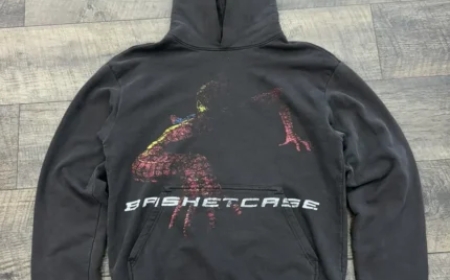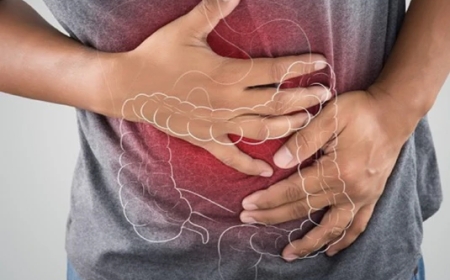How to Build a Pandemic Prep Kit in Columbus
How to Build a Pandemic Prep Kit in Columbus Living in Columbus, Ohio, means experiencing all four seasons, from frigid winters to humid summers—and with it, the potential for public health emergencies. While the most intense global pandemic of the modern era has passed, the lessons learned remain vital. Building a pandemic prep kit isn’t about fear—it’s about resilience. It’s about ensuring your
How to Build a Pandemic Prep Kit in Columbus
Living in Columbus, Ohio, means experiencing all four seasons, from frigid winters to humid summers—and with it, the potential for public health emergencies. While the most intense global pandemic of the modern era has passed, the lessons learned remain vital. Building a pandemic prep kit isn’t about fear—it’s about resilience. It’s about ensuring your household can remain safe, healthy, and self-sufficient during disruptions in supply chains, healthcare access, or community services. In Columbus, where neighborhoods vary from urban density in the Short North to suburban sprawl in Dublin and rural pockets in Franklin County, preparedness must be tailored to local conditions. This guide walks you through every step of creating a comprehensive, practical, and locally relevant pandemic prep kit, grounded in real-world logistics, regional resources, and proven public health principles.
Step-by-Step Guide
1. Assess Your Household Needs
Before purchasing anything, take inventory of your household. Consider the number of people, their ages, medical conditions, dietary restrictions, and mobility needs. A family of four with an infant and an elderly grandparent will require different supplies than a single adult living alone. In Columbus, where healthcare access can vary by ZIP code—particularly in underserved areas like the South Side or East Columbus—knowing your household’s specific vulnerabilities is the first step to effective preparation.
Make a list that includes:
- Number of adults and children
- Pregnant individuals or nursing mothers
- People with chronic illnesses (diabetes, asthma, heart conditions)
- Those requiring prescription medications
- Pets or service animals
This assessment will determine the volume and type of supplies you need. Don’t overlook pets—many pandemic protocols overlook animal care, but pets need food, medication, and hygiene supplies too.
2. Gather Essential Medical Supplies
A pandemic prep kit must prioritize health and hygiene. Start with these core medical items:
- At least a 30-day supply of prescription medications—contact your pharmacy in Columbus to request an extended fill if permitted under Ohio state law. Many pharmacies, including CVS on High Street or Walgreens in Westerville, offer mail-order or automatic refill programs.
- Over-the-counter medications: Acetaminophen, ibuprofen, cough suppressants, antihistamines, and electrolyte rehydration solutions (like Pedialyte or Gatorade).
- Thermometers: Digital, non-contact thermometers are ideal for monitoring fevers without close contact.
- First aid kit: Bandages, gauze, antiseptic wipes, medical tape, tweezers, and scissors. Include a CPR face shield if you’re trained.
- Prescription eyewear and contact lens supplies—if applicable.
- Medical documentation: Keep copies of prescriptions, insurance cards, emergency contacts, and a list of allergies in a waterproof folder.
Store medications in a cool, dry place away from direct sunlight. Columbus summers can be humid, so consider using silica gel packets in storage bins to prevent moisture damage.
3. Stockpile Non-Perishable Food and Water
The Ohio Department of Health recommends storing at least one gallon of water per person per day for a minimum of two weeks. For a family of four, that’s 56 gallons. In Columbus, where water infrastructure is generally reliable but can be affected by extreme weather (like the 2022 derecho that caused localized outages), having backup water is critical.
For water storage:
- Use food-grade plastic containers or purchase pre-filled bottled water.
- Replace stored water every six months.
- Keep a portable water filter (like a LifeStraw or Sawyer Mini) as a secondary option.
For food, focus on shelf-stable, nutrient-dense items that require minimal preparation:
- Canned beans, tuna, chicken, and vegetables
- Dried fruits, nuts, and trail mix
- Whole grain crackers, rice, pasta, and oatmeal
- Protein bars and meal replacement shakes
- Infant formula and baby food (if applicable)
- Pet food in sealed, dry containers
Rotate your stock every 3–6 months to avoid spoilage. Check expiration dates during Columbus’s seasonal changes—high heat in July and August can degrade packaging faster than expected.
4. Acquire Hygiene and Sanitation Supplies
Hygiene is the frontline defense against viral transmission. During the 2020–2021 pandemic, shortages of soap, sanitizer, and toilet paper highlighted how quickly supply chains can break down. In Columbus, where public restrooms in parks and transit hubs may be limited or closed during emergencies, maintaining personal hygiene at home is non-negotiable.
Essential hygiene items include:
- Hand soap: Liquid or bar, in bulk. Avoid antibacterial soaps unless medically necessary—plain soap and water are just as effective.
- Hand sanitizer: At least 60% alcohol content. Store in small, portable bottles for bags or cars.
- Disinfecting wipes and sprays: EPA-approved products effective against viruses. Look for brands like Lysol or Clorox.
- Toilet paper and alternative options: Keep 2–3 weeks’ supply. Also store bidet sprays, wet wipes, or reusable cloths for emergencies.
- Laundry detergent: Enough for 2–3 weeks of washing. Include bleach if safe for your fabrics.
- Menstrual products, diapers, and adult incontinence supplies: Stock for at least 30 days.
- Garbage bags: Heavy-duty, for safe disposal of contaminated materials.
Store these items in a dedicated, cool, dry closet or under-bed storage bin. Label containers clearly so they’re easy to find under stress.
5. Prepare Communication and Power Solutions
During a pandemic, power outages and internet disruptions can isolate households. Columbus has experienced localized blackouts during ice storms and thunderstorms. Ensure you can stay informed and connected.
Essential communication and power tools:
- Portable power bank: Charge phones, tablets, or medical devices. Choose one with at least 20,000 mAh capacity.
- Crank or solar-powered radio: NOAA weather radio with AM/FM and emergency alert capabilities. The Ohio Emergency Management Agency (OEMA) broadcasts critical updates via this channel.
- Backup chargers: For CPAP machines, oxygen concentrators, or other medical equipment.
- Landline phone: If you have one, ensure it’s corded—not cordless—so it works during power outages.
- Printed contact list: Include family, doctors, pharmacists, neighbors, and local community centers like the Columbus Public Library branches.
Test your radio monthly. Keep extra batteries sealed in airtight containers. Store all electronics in a Faraday bag if you’re concerned about electromagnetic pulses from severe storms—a rare but possible scenario.
6. Create a Comfort and Mental Health Kit
Pandemics aren’t just physical threats—they’re psychological ones. Isolation, anxiety, and uncertainty can take a heavy toll. In Columbus, where community ties are strong but can be strained during lockdowns, mental resilience matters.
Build a comfort kit with:
- Books, puzzles, playing cards, or board games
- Journal and pens for emotional expression
- Art supplies for children and adults
- Comfort items: blankets, stuffed animals, favorite tea or hot chocolate mix
- Calming music or meditation apps downloaded offline
- Guided breathing or yoga videos saved to a USB drive
Include a printed list of free, local mental health resources—such as the Columbus Behavioral Health Network or the Ohio Crisis Text Line (text HOME to 741741)—so help is accessible even without internet.
7. Plan for Special Circumstances
Not everyone’s needs are standard. In Columbus, where diversity is a strength, your prep kit must reflect that.
- For seniors: Include hearing aid batteries, denture cleaner, mobility aids (canes, walkers), and easy-to-open containers.
- For children: Add diapers, wipes, formula, favorite toys, and age-appropriate educational materials.
- For non-English speakers: Translate key instructions into your primary language. The Columbus Public Library offers multilingual health pamphlets.
- For those with disabilities: Ensure your kit includes backup equipment, extra batteries, and instructions for caregivers.
- For pet owners: Include a leash, carrier, vaccination records, and a 2-week supply of food and litter.
Customize your kit for your household’s unique makeup. A one-size-fits-all approach fails in emergencies.
8. Organize and Store Your Kit
Organization determines usability. A disorganized kit is as useless as no kit at all. Use clear, labeled plastic bins with locking lids to protect contents from moisture and pests. Store your kit in an easily accessible location—near the front door, in a garage, or in a basement closet if it’s dry.
Recommended storage setup:
- Bin 1: Medical supplies
- Bin 2: Food and water
- Bin 3: Hygiene and sanitation
- Bin 4: Power and communication
- Bin 5: Comfort and special needs
Include a printed checklist taped to the lid of each bin. Update it quarterly. Add a flashlight with extra batteries to each bin for nighttime access.
Best Practices
1. Rotate and Refresh Regularly
Food, water, and medications expire. Set calendar reminders every three months to check your kit. Replace expired items immediately. Use older food first—rotate like a pantry. For water, mark the storage date on each container. Columbus’s humidity can cause mold on cardboard packaging; store food in sealed plastic containers instead.
2. Educate All Household Members
Don’t assume everyone knows where the kit is or how to use its contents. Hold a 15-minute family meeting every six months to review the kit’s location, contents, and emergency procedures. Teach children how to use the radio, where to find water, and how to call for help using a landline or pre-programmed phone.
3. Build Community Connections
Preparedness isn’t solo. In Columbus neighborhoods like Clintonville, Bexley, or Worthington, community groups often organize mutual aid networks. Join your neighborhood Facebook group, Nextdoor, or local Rotary Club. Identify neighbors who may need help—elderly residents, single parents, or those with disabilities—and offer to share supplies or check in during crises.
Collaboration reduces individual burden and increases resilience. A group of five households pooling water and food storage can reduce waste and ensure no one goes without.
4. Learn Basic First Aid and Infection Control
Take a free online course from the American Red Cross or attend a local workshop at the Columbus Metropolitan Library. Learn how to:
- Properly wash hands for 20 seconds
- Use a mask correctly
- Disinfect high-touch surfaces (doorknobs, light switches, phones)
- Recognize symptoms of respiratory illness
- Perform basic CPR
Knowledge is as critical as supplies. In a pandemic, emergency responders may be overwhelmed. Your ability to act safely can save lives.
5. Keep a Digital and Physical Backup
Store digital copies of medical records, insurance info, and emergency contacts in a password-protected cloud folder (Google Drive, iCloud). But also keep printed copies in your kit. Power outages, server failures, or device damage can erase digital data. Paper is low-tech, reliable, and universally accessible.
6. Plan for Evacuation or Shelter-in-Place
Know your neighborhood’s emergency plan. In Columbus, the Franklin County Emergency Management Agency provides maps of evacuation routes and shelters. Identify two routes out of your home in case roads are blocked. If you must shelter in place, know how to seal windows and doors with plastic sheeting and duct tape if air quality becomes compromised.
Keep a “go bag” ready: a smaller version of your prep kit with essentials for 72 hours—water, snacks, medications, copies of documents, a change of clothes, and a flashlight. Store it by the door or in your car.
Tools and Resources
Local Columbus Resources
Take advantage of resources specific to Columbus and Franklin County:
- Franklin County Emergency Management Agency – Offers free preparedness guides, training sessions, and community alerts. Visit www.fcema.org for downloadable checklists.
- Columbus Public Library – Offers free internet access, multilingual health materials, and workshops on emergency preparedness. Many branches have community rooms for local meetings.
- Ohio Department of Health – Publishes seasonal health advisories and pandemic response updates. Subscribe to their email alerts.
- United Way of Central Ohio – Provides food assistance, mental health referrals, and volunteer opportunities for preparedness initiatives.
- Ohio State University Extension – Offers research-backed guidance on food safety, water storage, and home disinfection.
Recommended Products
These items are widely available in Columbus stores like Target, Walmart, Home Depot, or online retailers:
- Water storage: Reliance Aqua-Tainer 7-Gallon Jugs (available at Bass Pro Shops)
- Power bank: Anker PowerCore 26800mAh
- Radio: Midland ER310 Emergency Weather Radio
- Disinfectant wipes: Clorox Disinfecting Wipes (EPA-registered)
- First aid kit: Adventure Medical Kits Mountain Series
- Food storage: Mylar bags with oxygen absorbers for long-term dry goods
Mobile Apps for Preparedness
Download these free apps before an emergency:
- Ready.gov – Official U.S. government preparedness app with checklists and alerts.
- Red Cross Emergency – Provides real-time alerts, first aid videos, and shelter locators.
- Franklin County Alerts – Push notifications for local emergencies.
- MyHealth – Manage prescriptions and medical records from Ohio State Wexner Medical Center.
Enable notifications and test them monthly. Turn off battery-saving modes that may block alerts.
Real Examples
Example 1: The Thompson Family (Westerville, OH)
After experiencing a power outage during a winter storm in 2021, the Thompsons—parents and two young children—realized they had no water or light. They built a pandemic prep kit using the steps above. They stored 100 gallons of water in food-grade containers, kept a week’s supply of formula and baby food, and placed a crank radio in the living room. They also printed maps of nearby shelters and posted them on the fridge. When a local school closed due to an influenza outbreak in 2023, they were able to keep their children safe at home without panic or last-minute shopping.
Example 2: Maria, a Single Mother in South Columbus
Maria, who works two part-time jobs and cares for her 7-year-old son and elderly mother, struggled to afford emergency supplies. She joined a neighborhood mutual aid group through the South Side Community Center. Together, they pooled resources: one family donated canned goods, another provided water jugs, and a retired nurse taught them how to make homemade hand sanitizer. Maria now keeps a compact kit under her bed with essentials for three people, and she checks it every month. Her son helps label the bins, turning preparedness into a family routine.
Example 3: The Rivera Household (Columbus Heights)
The Riveras include a grandfather on oxygen therapy. Their prep kit includes two backup oxygen concentrators, a portable battery pack for the device, and a printed protocol for emergency oxygen use. They keep extra tubing, nasal cannulas, and a list of local oxygen suppliers. When a gas leak forced a neighborhood evacuation in 2022, they were able to safely relocate with all medical equipment intact because they had practiced their plan.
Example 4: The Patel Family (Dublin, OH)
As Indian immigrants, the Patels needed culturally appropriate food and medication. Their kit includes lentils, rice, turmeric, and Ayurvedic remedies alongside Western medicines. They translated emergency instructions into Hindi and Punjabi and kept them in the kit. They also included a printed list of local temples and cultural centers that served as informal support hubs during the pandemic. Their approach shows that preparedness must respect cultural identity.
FAQs
Do I need to buy expensive gear to build a pandemic prep kit?
No. Many essentials can be purchased gradually using items you already own. Start with water and medications. Use existing containers for storage. Buy non-perishable food during regular grocery trips. A basic kit can be assembled for under $200 over time.
How often should I update my pandemic prep kit?
Check and rotate supplies every three months. Replace expired food, water, and medications. Update contact lists and medical records annually. Test electronics monthly.
Can I store my prep kit in the garage?
Only if it’s climate-controlled. Columbus summers can reach 90°F with high humidity, which can damage electronics, medications, and food. A basement, closet, or under-bed storage is better. Avoid direct sunlight and damp areas.
What if I can’t afford to buy everything at once?
Start small. Buy one gallon of water and one week’s worth of non-perishable food each month. Focus on medications and hygiene first. Many Columbus food pantries (like the Central Ohio Food Bank) offer emergency supplies to qualifying families.
Should I include cash in my kit?
Yes. ATMs and card readers may not work during outages. Keep $100–$200 in small bills in a sealed plastic bag.
Is it safe to store bleach and cleaning supplies with food?
No. Store chemicals separately in a locked cabinet. Use labeled, color-coded bins to avoid cross-contamination. Never store cleaning products near food or medications.
What if my pet gets sick during a pandemic?
Keep a list of 24-hour veterinary clinics in Columbus, like the Columbus Animal Hospital or the OSU Veterinary Medical Center. Include your pet’s vaccination records and a recent photo in your kit.
Can I use a backpack as my go-bag?
Yes. A durable backpack with padded straps is ideal for quick evacuation. Pack it with water, snacks, medications, a flashlight, and copies of important documents. Keep it by the door.
Where can I find free training in Columbus?
The Columbus Public Library hosts monthly preparedness workshops. The Red Cross offers free first aid and CPR classes. Check their websites for upcoming sessions.
Conclusion
Building a pandemic prep kit in Columbus isn’t about preparing for the worst—it’s about empowering yourself and your community for whatever comes next. Whether it’s a respiratory outbreak, a winter storm that knocks out power, or a localized health crisis, having a thoughtful, well-stocked, and regularly updated kit gives you control when chaos feels inevitable. The tools you need aren’t exotic or expensive. They’re water, food, medicine, communication, and connection. What sets Columbus apart is its strong neighborhoods, resilient institutions, and diverse population—all of which can be harnessed through thoughtful preparation.
Start today. Don’t wait for a crisis to act. Take one step: buy a gallon of water. Add one can of beans. Print one emergency contact list. Over time, these small actions compound into security. Your kit isn’t just supplies—it’s peace of mind. And in a world of uncertainty, that’s the most valuable resource of all.


































